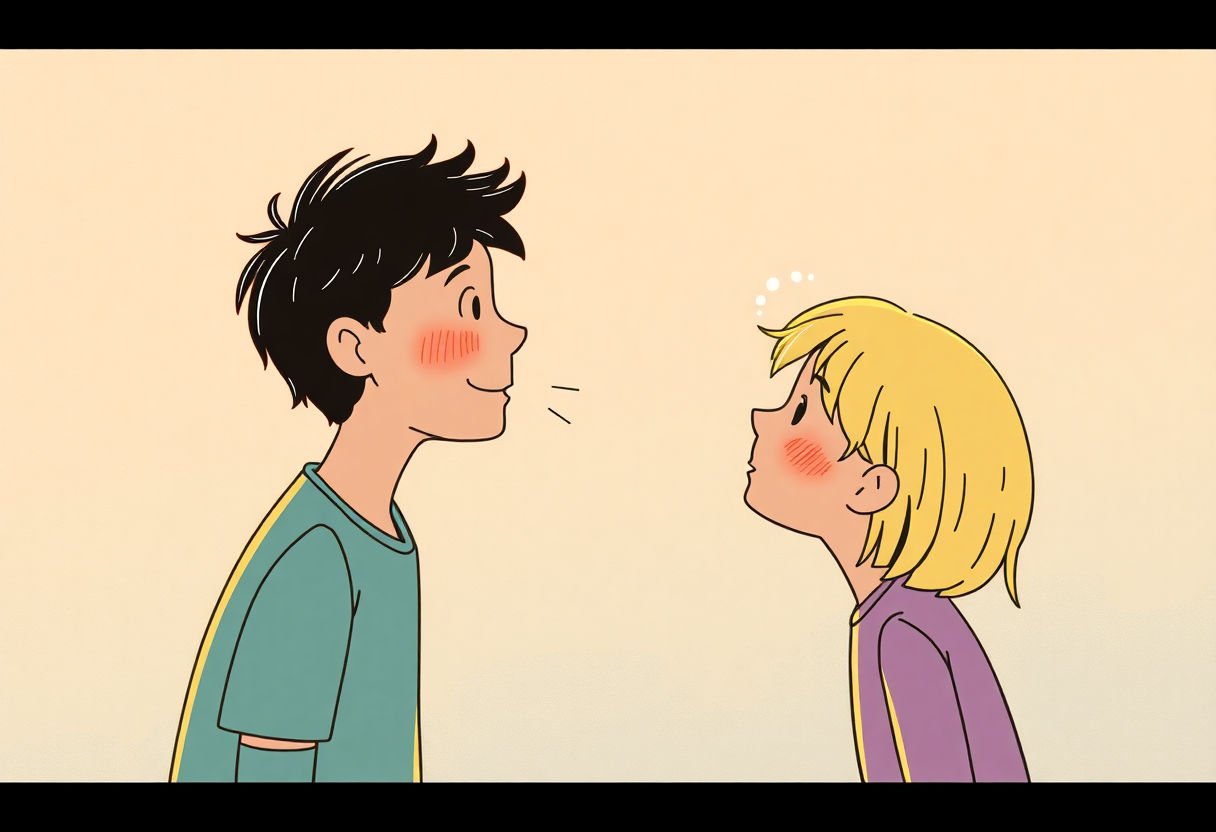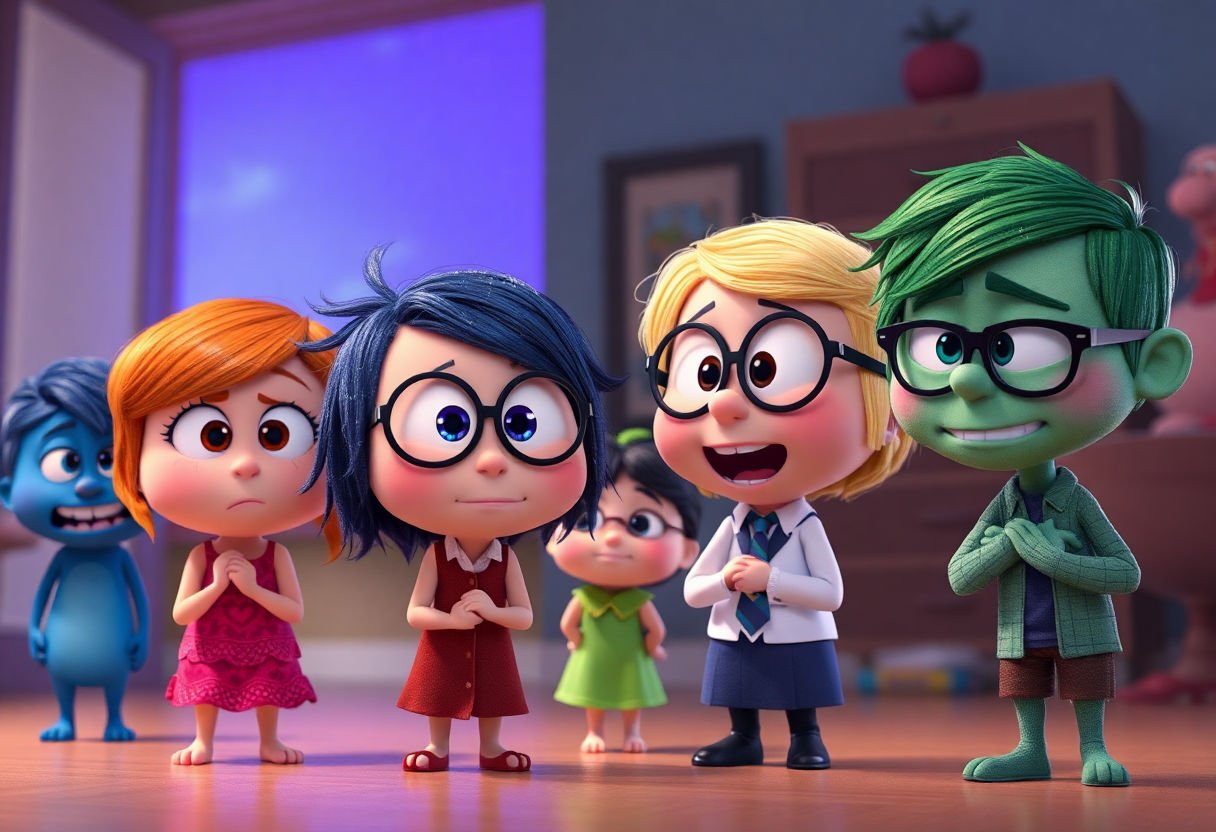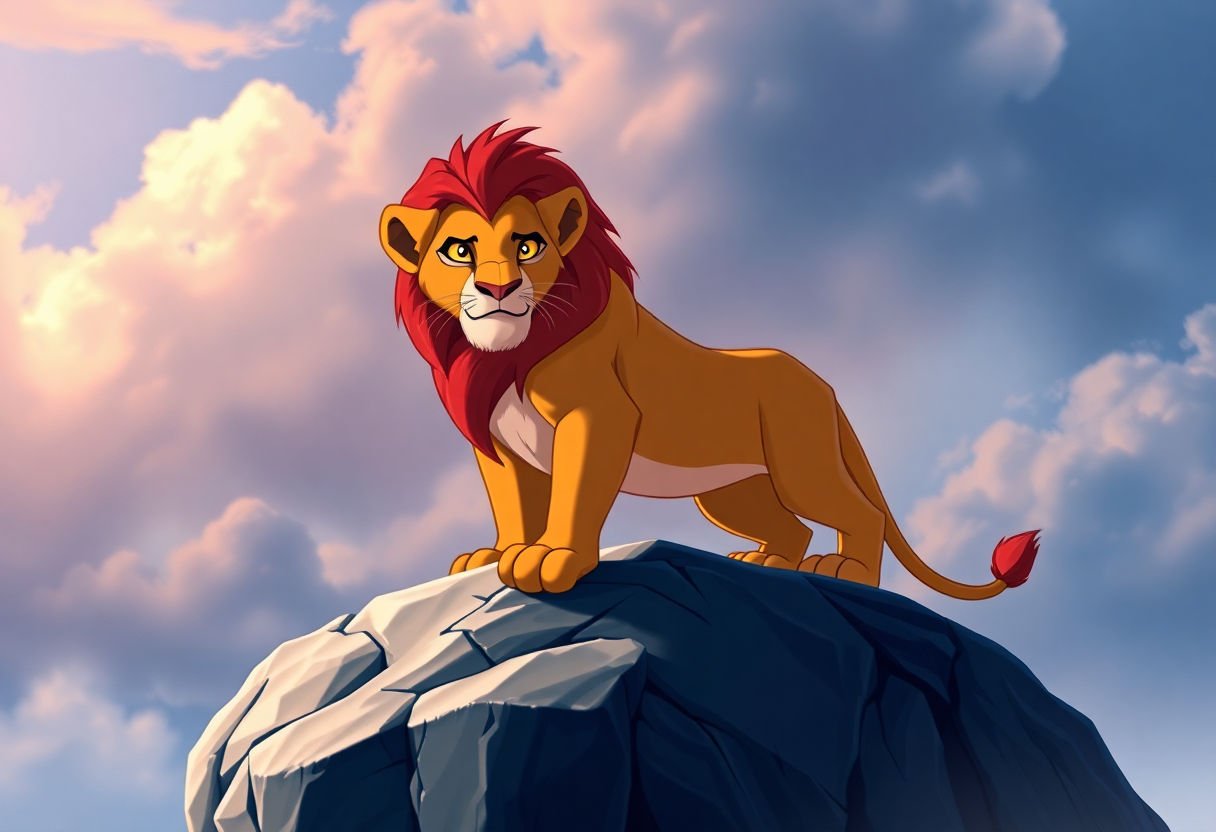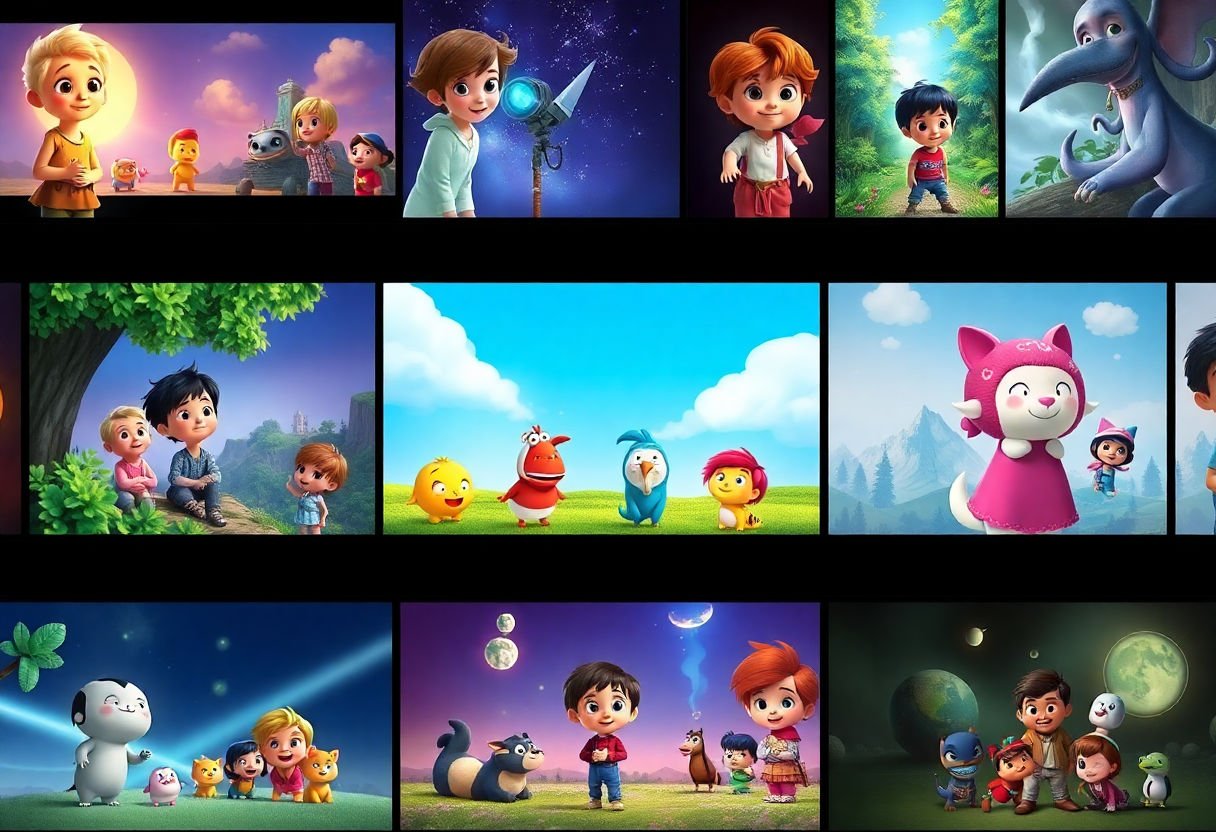Movies play a pivotal role in children’s emotional development, serving as a mirror to reflect and explore their feelings. Through cinematic experiences, kids can better understand complex emotions, from joy to sadness and everything in between. In this article, we delve into the emotional journeys provided by films like ‘Inside Out’ and ‘Up,’ each offering invaluable lessons on understanding oneself and others. As we examine beloved tales like ‘Frozen’ and ‘The Lion King’, we uncover how they promote learning about empathy, love, and responsibility. Join us in unraveling these narratives that shape young minds and hearts.
Key Takeaways
- Children’s movies play a crucial role in emotional development by enabling them to understand and express their feelings better.
- Films like “Inside Out” and “Coco” offer valuable lessons on managing emotions such as joy, sadness, and the importance of family ties.
- Movies such as “Zootopia” and “Frozen” address social issues like prejudice and the power of love, providing essential lessons in empathy and sacrifice.
- Environmental themes in “Wall-E” and timeless messages in “The Lion King” help children grasp the concepts of conservation and life’s responsibilities.
- Watching these films encourages children to explore more movies that foster emotional intelligence and resilience.
The Role of Movies in Emotional Development

Movies play a pivotal role in the emotional development of children, offering a unique medium through which they can both empathize with and understand a wide range of emotions. By presenting stories that mirror real-life experiences, movies enable children to explore complex emotions in a safe environment.
One of the primary ways movies aid emotional development is through emotional recognition. Children learn to identify different emotions by observing characters in various scenarios. They witness how characters respond to challenges, and can draw parallels to their own experiences, helping them to label and process their feelings effectively.
Movies also foster emotional expression. As children engage with the narratives, they are encouraged to express their own emotions. This can be particularly beneficial in helping them articulate their feelings in real life, boosting their emotional intelligence.
Furthermore, movies are instrumental in teaching emotional regulation. Characters often face dilemmas requiring thoughtful responses, modeling for children how to manage their emotions under duress. By observing these behaviors, children learn strategies for handling stress, anger, or disappointment.
Additionally, films offer valuable social-emotional learning opportunities by portraying empathy and compassion. Through the lens of character development, children see the impact of actions on others and learn the importance of understanding diverse perspectives. This can be crucial in developing healthy interpersonal relationships.
Ultimately, movies not only entertain but also play a significant part in nurturing a child’s emotional maturity, making them an invaluable tool in facilitating children’s growth and understanding of themselves and others.
Inside Out: Emotions at the Forefront

In the vibrant world of animation, Pixar’s Inside Out stands out as a profound exploration of children’s emotional landscapes. This captivating film uniquely personifies emotions, giving characters like Joy, Sadness, Anger, Fear, and Disgust distinct personalities and roles. By doing so, it offers children a relatable framework to recognize and discuss their feelings.
The story unfolds inside the mind of Riley, a young girl experiencing the upheaval of moving to a new city. This narrative backdrop not only engages young audiences but also introduces them to the complex interplay of emotions. Through Riley’s journey, children learn that all emotions have value and purpose, challenging the often-held belief that only positive emotions are desirable.
One of the film’s critical lessons is the significance of Sadness. Initially perceived as a negative force, Sadness eventually emerges as a crucial emotion for processing loss and facilitating deep emotional connections. This portrayal encourages children to embrace their vulnerabilities and express them openly.
Moreover, Inside Out underscores the importance of emotional intelligence. It emphasizes the idea that emotions are not isolated experiences but rather interconnected aspects of one’s identity. This understanding fosters empathy and self-awareness, crucial components of emotional development.
The visual and narrative elements combine to create an engaging educational experience, one that can prompt conversations between parents and children about their own emotional experiences. Thus, Inside Out not only entertains but also serves as a valuable tool in nurturing emotional growth, making it a must-watch film for young viewers seeking to understand their inner world.
Up: The Journey of Emotional Connection
In the expansive realm of children’s movies, Up stands out as a poignant journey into the realms of emotional connection and personal growth. Released by Pixar Animation Studios, Up artfully narrates the heartwarming story of Carl Fredricksen, an elderly gentleman who embarks on an extraordinary adventure to fulfill a promise made to his late wife, Ellie. This film is not merely an adventure but a cinematic exploration of deeper emotional dimensions, teaching young audiences about love, loss, and the power of new beginnings.
At its heart, Up conveys significant lessons on the importance of friendship and companionship. Through Carl’s evolving relationship with Russell, a young and optimistic scout, children learn the value of forming meaningful connections regardless of age or background. This narrative champions the idea that friendships can profoundly change one’s outlook on life, breaking barriers and teaching viewers to embrace diversity and understanding.
Moreover, Up addresses the concept of coping with loss and moving forward. Carl’s journey is one of emotional healing, guiding children through the complexities of grief and demonstrating how adventure and new experiences can help mend a broken heart. The film underscores that memories of loved ones can be cherished without hindering the potential for future joy and fulfillment.
Up also weaves in moments of humor and suspense alongside its emotional depth, making it an engaging and multifaceted story. With its profound emotional narratives, Up encourages its audience to treasure their relationships and embrace adventures, however unconventional they might be, as essential steps toward personal growth and understanding.
Coco: Embracing Culture and Family Ties

Coco, a celebrated animated film by Pixar, dives deep into the heart of Mexican culture while exploring the perennial themes of family ties and inter-generational relationships. The film unfurls the vibrant tapestry of the Día de los Muertos, or Day of the Dead, introducing young viewers to the beauty of celebrating and honoring one’s ancestors.
At the core of Coco is the poignant story of a young boy named Miguel, who dreams of becoming a musician despite his family’s generational ban on music. His accidental journey into the Land of the Dead becomes an enlightening experience that bridges the gap between the living and the spirits of his ancestors. This narrative provides a profound commentary on the importance of understanding and embracing one’s heritage.
Key Themes Explored in Coco:
-
Cultural Identity: Through its rich visual storytelling and authentic portrayal of Mexican traditions, Coco encourages children to appreciate and respect diverse cultural backgrounds.
-
Family and Forgiveness: It highlights the significance of family bonds, making viewers reflect on the values of forgiveness and understanding across generations.
-
Pursuit of Dreams: Miguel’s relentless desire to follow his passion teaches children about perseverance and courage in the face of familial and societal expectations.
Coco masterfully combines elements of joy, sorrow, and reconciliation, making it an exemplary film for imparting cultural awareness and emotional depth to young audiences. As Miguel learns to cherish his family’s past while embracing his future, children learn that understanding one’s roots can be as enlightening as pursuing one’s dreams.
Zootopia: Addressing Prejudice and Empathy
Zootopia stands out as a masterful animation that addresses critical societal issues like prejudice and empathy within a whimsical narrative. From the outset, the movie introduces viewers to a world where animals of all species coexist, yet not without underlying biases and assumptions based on species type. This portrayal of societal dynamics serves as a mirror to our world, subtly opening avenues for children to recognize and question stereotypes.
As viewers follow Judy Hopps, the ambitious bunny police officer, and Nick Wilde, the cunning fox, on their journey, they encounter systemic discrimination and preconceived notions. Through their experiences, children learn the value of empathy—understanding viewpoints and emotions of those who are different from themselves. This is eloquently articulated in Judy’s words, “Fear always works,” reflecting on how prejudice can be utilized to drive divisions, but also can be overcome with understanding and open discourse.
The movie effectively teaches young audiences the significance of overcoming biases through simple yet powerful storytelling:
- Demonstrating how collaboration with those different from us enriches our world.
- Encouraging critical thinking about the existent societal structures and roles.
By exploring these complex themes within an engaging and accessible format, Zootopia not only entertains but also educates, instilling a sense of moral awareness. The film encourages children to imagine a world where differences are embraced, making it an essential tool for fostering a generation that values inclusivity and kindness.
Frozen: The Power of Love and Sacrifice
In Disney’s Frozen, the theme of love and sacrifice is intricately woven throughout the narrative, serving as a powerful tool for conveying emotional depth to its young audience. The film’s central message highlights the transformative power of love, particularly the bond between sisters, Elsa and Anna. As children navigate complex emotions, Frozen offers them a relatable story about emotional connection and the courage it takes to embrace one’s true self.
Love as a Transformative Force
At the heart of Frozen lies the belief that love is not just an emotion but a binding force that can break barriers and mend what is broken. The relationship between Elsa and Anna exemplifies how love can manifest in selflessness and sacrifice, teaching children that genuine affection often requires putting others first. This theme is beautifully depicted in the scene where Anna sacrifices herself to save Elsa, demonstrating that love can conquer fear.
Sacrifice and Redemption
Sacrifice in Frozen is portrayed as both a challenge and a redemption arc for the characters. Elsa’s initial decision to isolate herself to protect her sister reflects a misunderstood sacrifice, which, while well-intended, leads to personal turmoil. The narrative progresses to show that real sacrifice must be accompanied by openness and trust. Elsa’s eventual acceptance of her powers, with Anna’s unwavering support, portrays redemption as a journey of mutual understanding and support.
By engaging young viewers with its enchanting narrative, Frozen taps into the profound emotional lessons of love and sacrifice, making it a must-watch for fostering discussions about selflessness and personal growth.
Wall-E: Conservation and Connection
Wall-E, a visually stunning film, crafts a narrative that intertwines the themes of environmental conservation and human connection. This beloved Pixar movie not only entertains but also imparts crucial lessons, urging young audiences to reflect on the consequences of environmental neglect and the importance of interpersonal relationships.
Set in a dystopian future where Earth has become uninhabitable due to pollution and waste, Wall-E serves as an important reminder of the environmental responsibility each individual holds. The film’s protagonist, a determined and compassionate robot named Wall-E, spends his days cleaning up the planet, highlighting the significance of sustainability and waste management. Children learn to appreciate the delicate balance of nature and the impact of human actions on the planet.
Wall-E’s adventures lead him to EVE, a sleek and advanced robot, igniting a narrative of emotional connection and love. Their journey illustrates the power of companionship and the universal need for affection and understanding. As Wall-E and EVE explore their relationship, young viewers witness the importance of communication and trust in building meaningful relationships.
Moreover, the film underscores the consequences of excessive consumerism and detachment from the natural world. It presents a society dominated by convenience and comfort, ultimately leading to environmental degradation and social isolation. This cautionary tale encourages children to foster a sense of responsibility towards both the environment and their communities, promoting values of empathy and collective action. Through breathtaking visuals and heartfelt storytelling, Wall-E remains a powerful tool for teaching children essential environmental and social lessons.
The Lion King: Circle of Life and Responsibility

The 1994 animated classic The Lion King offers profound lessons on the circle of life and the weight of responsibility. This beloved film does more than just entertain; it imparts essential teachings about family, courage, and growth, making it an ideal choice for young audiences.
One of the central themes in The Lion King is the notion of the circle of life, a holistic understanding of nature and existence where every being is interlinked. This concept is visually and thematically represented in the movie through the famous opening scene. The idea encourages children to appreciate life’s cyclical nature and recognize their place within it.
Additionally, the film explores the theme of responsibility through Simba’s journey. As a young lion cub destined to become king, Simba initially shirks this duty after a personal tragedy. Through his exile and eventual return to the Pride Lands, children learn about the importance of facing one’s responsibilities, regardless of the challenges they might pose. The character arc of Simba highlights resilience and personal growth, teaching young viewers that true courage lies in overcoming fears and making difficult decisions.
Moreover, The Lion King underscores the value of family and community support. The bond between Simba and his father, Mufasa, exemplifies the enduring nature of familial love and guidance. Characters like Timon and Pumbaa also illustrate how friendships can sustain one through hard times, creating a vivid tapestry of support and loyalty.
In summary, The Lion King is a rich reservoir of emotional learning. Its powerful messages about life’s interconnectedness and the virtues of responsibility leave an indelible mark on young minds, encouraging them to grow into thoughtful and empathetic individuals.
The Emotional Journey Continues

The emotional landscape curated by kid movies continually unfolds, offering a plethora of opportunities for emotional growth and understanding. As children delve deeper into these narratives, they accumulate not just stories, but tools for navigating their complex inner worlds. This ongoing journey encourages even more engagement with films that act as emotional mirrors and guides.
Films like “Finding Dory” extend the conversation on persistence and self-worth, teaching young audiences that challenges and imperfections are parts of life’s fabric. As children watch Dory’s quest, they can learn resilience in the face of adversity.
Similarly, movies like “Moana” emphasize the courage to pursue one’s identity and inner calling. Moana’s voyage inspires children to explore their strengths and reinforces the idea that real bravery often means pursuing one’s path despite uncertainty.
Moreover, emotional exploration isn’t limited to major motion pictures. Short films and animated series provide bite-sized yet profound emotional narratives. These stories can offer quick, impactful lessons on friendship, kindness, and the consequences of actions—ensuring that the emotional journey is both engaging and varied.
To fully leverage the power of films as emotional tools, families are encouraged to create viewing experiences that include discussions and reflections before and after the movie. Such practices can enhance the emotional understanding and personal growth of children, allowing them to express their thoughts and feelings in a safe and nurturing environment. Through these narratives, the emotional journey not only continues but thrives, offering endless dimensions of learning and empathy.
Conclusion
Choosing movies that foster emotional growth in children is vital. With films like Inside Out and Zootopia, children learn to navigate complex emotions and develop empathy. As the landscape of entertainment evolves, selecting narratives that reflect life’s challenges and joys remains crucial. Future endeavors in children’s cinema should continue to embrace themes of diversity, love, and responsibility. Encourage your child to explore these stories, which not only entertain but also equip them with the necessary emotional tools for life’s journey. Embrace this cinematic world as a means to nurture their emotional intelligence.
Frequently Asked Questions
How do movies aid in children’s emotional development?
Movies provide a safe space for children to explore and recognize different emotions through relatable characters and storylines. They help in understanding emotions by presenting them in vivid and engaging ways.
Are there specific movies that best convey complex emotions to children?
Yes, films like Inside Out, Frozen, and The Lion King are designed to depict complex emotional landscapes, aiding children in understanding concepts such as joy, sadness, love, and grief.
How frequently should children watch movies for educational purposes?
While there is no fixed rule, integrating movies that address emotion-related themes into a child’s routine can be beneficial once a week or as part of a balanced media consumption plan.
What age group benefits the most from emotion-focused movies?
Typically, children aged 5 and above can better comprehend and benefit from the emotional and social themes presented in movies curated for their age group.
Can watching movies have negative effects on children’s emotional development?
Excessive consumption or exposure to inappropriate content may lead to misunderstanding or stress. Thus, it’s important for parents to select age-appropriate films and discuss the emotional contexts with their children.


